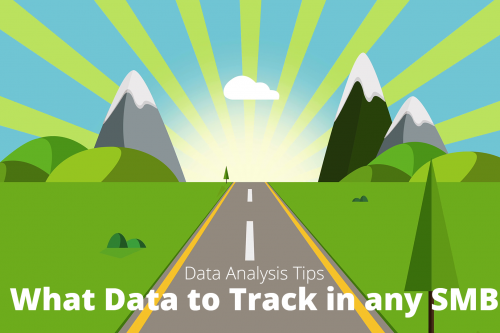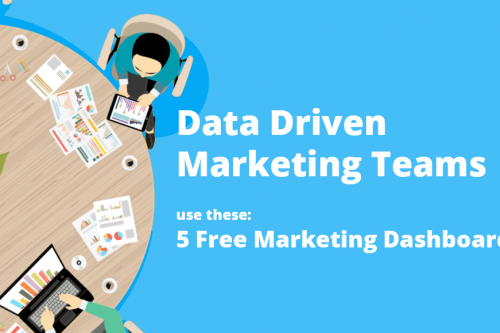About the Authors
Barry Wacker graduated from Ohio State University with a bachelor’s degree in philosophy. He is currently the Executive Vice President and Development Officer of R/GA Corporation. In fifteen years, he helped R/GA establish a vision and dozens of digitization strategies.
Chris Stewart is a graduate of the Fuqua School of Business at Duke University with a Master of Business Administration degree. He is currently Managing Director of R/GA Business Transformation Practice, helping companies use technology to create new products, services, business models, and organizational capabilities to achieve business transformation in the digital age.
Introduction
The following explains the methodology of this transition in the Internet era. By studying the secrets of world-class companies such as Google, Apple, Amazon, and Netflix, the author summarized the functional integration of business model design methods that were unknown to all companies in the Internet era, and proposed seven implementation rules.
The Core Principle
Integration
First, the company needs to integrate the core product groups with functional integration and become a product group with a clear brand goal, so that the brand can be prosperous and form a continuous attention among users.
Use one of the most practical and simple features to get users first and foremost, and think about second-generation products on the basis of having a large user base.
Case: Amazon
Amazon’s flagship “Everyone can find any items that you want to buy online”. When people became accustomed to picking books on Amazon, Amazon introduced the Kindle, so that users can use Kindle to read e-books anytime and anywhere.
Tip: Find a book. — This very useful feature has become a function of Amazon’s product integration point.
Second Principle
The scene is king
The traditional mandatory advertising marketing model is outdated, and it is an “interruption” for users to use the product. After the emergence of social media and mobile devices, people are relying more on advertising and interaction in new interaction scenarios. Each company’s marketing department must be changed from being a disturbing master to a scene master, making full use of information, social networking, payment, and other scenes to invent new ways of communication.
Case: Ford Motor
In the Internet age, it is more convenient to rent a car or taxi. Many of the top 500 auto companies have found that car sales have been declining year by year. Many young people do not buy cars. This makes many car companies very anxious, even out to resist uber such a taxi software. Ford found a way: invested in a car rental company, Zipcar, and provided Zipcar with 1,000 Ford cars for rent. Zipcar’s company data is very beautiful, with 760,000 members at the time. Sales of Ford Motors soared, and Zipcarfe was quickly acquired by another company. Ford Motor Company received a huge return.
Third Principle
Catch users with synergy
Make your products work together, interdependent, and mutually supportive. Buffett has a well-known concept called the economic moat. Any company with such a moat will have a pricing power on the brand, and competitors will never be able to break it.
Case: Apple Inc.
Apple was the first company to make a personal computer, but at the end of the last century, Apple’s market share has dropped to 3%. After Jobs returned, he created a closed-loop product ecosystem. In 2001, Apple introduced a series of free applications such as iTunes and iDVD. In order to match iTunes’s music features, the iPod was introduced. Because the iPod uses the iTunes program, you can download music from your computer and transfer it to the Pod. Users develop the habit of sharing ecosystem. When Apple introduced the iPhone, the user bought the mobile phone for convenience. As long as there is an Apple ID, the data in the PC, iPad, and iPhone can be communicated to each other in the iCloud.
Fourth Principle
Re-conceive value creation
Establish a disruptive mindset and find new product directions by continually disrupting and redefining products. Most entrepreneurs or corporate executives are often experts in the industry, and they are self-conscious about market conditions and user habits. This has become a problem. They say that they are transitioning, but they cannot get out of their own experience and do not dare to do anything. The author gives three ways of thinking to open up subversive thinking: from the product’s perspective, from the brand’s point of view, from the perspective of commercial value.
Tip: Rethink the product as a service. — Do not think from the perspective of increasing sales, but instead guide the transformation path from the perspective of making the user more convenient.
Case: Tesco’s service-oriented APP
The world’s second largest retail company, Tesco, positioned the company’s APP as a service. For example, many elderly people buy something very heavy and it is inconvenient to take home. They can then scan the bar code order with Tesco’s APP in the supermarket and the goods will be sent to his home. If someone likes to visit the supermarket, or wants to see real goods, you can pick the product you want to buy on Tesco’s website. When the person arrives at the supermarket, APP will guide him to the location of the product. This saves a lot of inconvenience.
Tip: Re-imagine brands from the perspective of added value.
How to Advance Insurance & Compromise with Customers
Progressive insurance companies have installed a hardware called Snapshot under the dashboard of each driver. As long as the users keep updating data, they promise to reduce the premium after a certain period of time. Advance insurance not only obtains the data sent by the users anytime, anywhere, but also reminds customers with poor driving habits at any time, reducing the chance of accidents. Users also get cheaper at no cost.
Tip: Reimagine the future of the company. — In many cases, entrepreneurs are not reluctant to make a transition because of not want to, but they have not opened their minds. When Steve Jobs conceived of the mac book, he said that if the computer can be made as thin as a book, it would be fine. Tesco’s CEO is also very foresighted. His vision is to transform Tesco into a company that orders online and collect in store, and soon realized Tesco’s functional transformation. To change the thinking, cross-border to think about the future of the company, often the mind is opened.
Fifth Principle
Redesign value transmission
Every company should have a core brand goal. When this goal is established, all strategic designs and product designs cannot deviate from this track. It must be reflected through product design and user experience. It is better not to increase the function. The simpler the better. Single product features and brand goals are more conducive to spread, users are also the easiest to understand the nature of the product. Moreover, if it is a small startup company, it is often not easy for an opponent to discover your threat to him. Many subversive innovations often do not appear in the field of competition but cross-border areas.
Case: Apple Inc.
Apple is a company that makes personal computers. Mobile phone companies such as Nokia and Motorola all regard Apple as an IBM competitor. Until Apple suddenly launched the iPhone, they just woke up, but it’s too late.
Sixth Principle
Reposition value acquisition
How do you create a product’s functional ecology? The approach is data-oriented. The decision of adopting new technologies and developing new products is driven by data.
Case: Nike+
1. Do subtraction first and concentrate on acquiring data. The first generation of Nike+ only had iPods and websites, and Nike focused all its attention on the user’s real-time updates of their running data. After the success of the Nike+iPod, Nike removed the iTunes playlist on the site because it was an ineffective tool for Nike. During the Beijing Olympics, because many Chinese did not use the iPod at the time, Nike developed the second generation of the product before the Olympics. Nike+Sportband, as a new entrance, completely turned off the music.
2. After the core users are basically stable, add additions, expand new user groups, and make new product iterations. For users who couldn’t afford the iPhone, Nike introduced the Nike+Fuelband, a cheap bracelet. Moreover, office workers who do not participate in sports and fitness can also use the bracelet to record data.
Seventh Principle
Think functional integration as the most important thing
Functional integration is a long and slow road. At the turn of the clock, Nike took 7 years to develop the first generation, and forward insurance also took nearly 10 years to develop Snapshot.
For so long, many companies have fallen into various pits. For example, if you are doing it, you will sell user data, or become a platform for paid-for-sharing data, and do not concentrate on iterating of their product.
There are also companies that dismantle the functionally-coupled product divisions because of conflicts of interest between the company’s internal departments. Some companies have too much ambition to move toward another extreme. They want to transform the company, so shutdown most departments, and concentrate on getting new product out. Because the trial-and-error cycle is too long, it causes serious losses and even went bankrupt.
Business leaders should create a supporting department and a budget department for the functional integration department to ensure that the development of the ecosystem is always at the most important strategic position.
Golden Rules
Almost all companies will initially create a website on branding and service-related information when they are involved in digitalization. Today, the information scene on the Internet is more reflected in online search. This has enabled Google to jump from an obscure brand to the world’s most valuable media brand.
1. Google: every day, “to process billions of search messages” we sell targeted advertising in ways that are better suited to the information scene than to bother users.
2. Rethinking a product as a service requires you to fully consider the user experience. In terms of completeness, functional integration is to take “integrity as its root”.
Now, users expect to get clarity and consistency from the brands they contact. Whenever they get a good number from a brand When experiencing, they will increase their expectations of all other brands interacting with each other.
3. Just like the sun and water, technology and data are interdependent and they jointly promote the growth of the ecosystem. The integration of the digital world and the real world can only be achieved through proper management of the functional integration ecosystem.
4. The Internet and function integration brings other equally profound changes and choices to today’s enterprises. People tend to ignore the threat to their status quo in the short term and get stuck on their core competitiveness, even these core products are gradually replaced by new ones in the market. As more and more companies begin to benefit from functional integration, it becomes increasingly difficult to distinguish which industry these companies are actually engaged in.
For more good articles, please visit testblog.datadeck.com
Datadeck provides a dashboard and reporting solution that includes charts, graphs, scorecards, maps, and ad-hoc reports. Everything is driven from the dashboards.
Datadeck is not a metric design tool per se, but it is a powerful tool for visualizing your measures. It also allows others (stakeholders) to access your metrics on their own.
Datadeck works well with Excel. You can easily import data into Datadeck from Excel or other common tools. Datadeck’s power is in the ability to quickly and easily try different graphical representations of your data.





